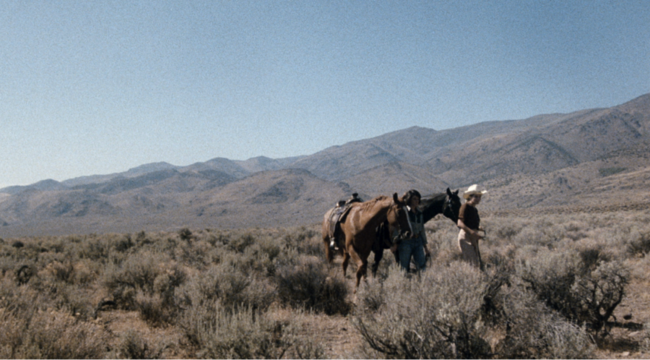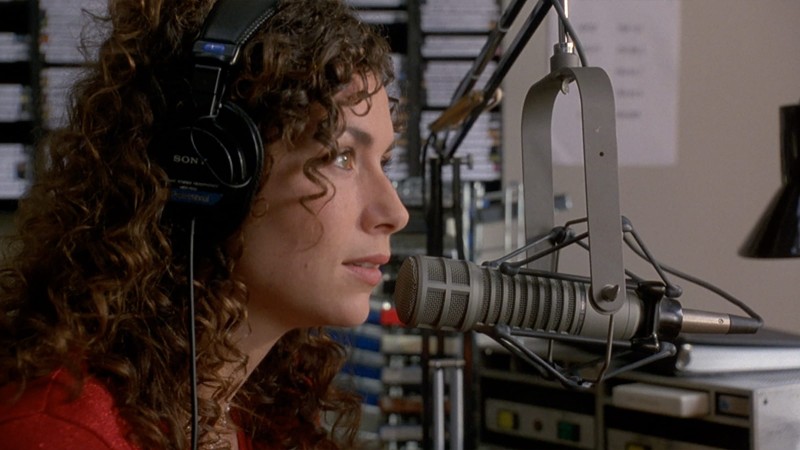Breaking Ground: A Conversation with Donna Deitch
_medium.jpg)
When Donna Deitch set out to make an adaptation of Jane Rule’s 1964 novel Desert of the Heart, she was hoping to depict an experience she’d never seen represented on-screen: a romance between two women that had a happy ending. Taking on the roles of writer, producer, and director, she crafted a refreshingly modern twist on the Hollywood love story, one that became a trailblazing work of queer filmmaking. Desert Hearts centers on Vivian Bell (Helen Shaver), an East Coast professor who travels to Reno to file for divorce, and Cay Rivvers (Patricia Charbonneau), the free-spirited young sculptor with whom she develops an intimate relationship. Set amid the sweeping desert landscape of 1950s Nevada, the film vividly evokes the thrill of a new, unexpected love with the help of a soundtrack packed with jukebox classics and gorgeous cinematography by future Oscar winner Robert Elswit (There Will Be Blood).
With a weeklong run of our new restoration opening today at the IFC Center in New York, I spoke with Deitch about what made her feel it was possible to translate this story to the screen at a time when LGBT characters were largely absent from American cinema. In these highlights from our conversation, she discusses her collaborative process with her stellar creative team on Desert Hearts and the film’s enduring influence.
On discovering Jane Rule’s novel
My desire was to tell a lesbian love story on film that did not end in a bisexual love triangle or suicide. I just felt this story had not yet been told, and it was the film I wanted to see. So I was thinking about writing, and then one day a friend of mine gave me this book, Desert of the Heart, by Jane Rule. I read it seven times in a row. I thought this story had everything I needed for this film. Jane’s gone now, but she was so famous in Canada that you could write “Jane Rule, Canada” on an envelope and a letter would get to her. I wrote to her, telling her why I thought this would make such an important film, and she got back to me and said, “Well, I’ve been approached by two studios, but I haven’t sold it to them because I wasn’t sure how they would handle the material. So let’s talk.”
I met Jane out in the California desert, because she used to come out to California in the winters, out by Palm Springs. I brought all these documentaries and experimental films I’d made. I brought my projector and projected the films on the wall of her trailer. We easily arrived at an agreement for me to option the book, and she was supportive from beginning to end and loved the movie.

On crafting an authentic portrait of a lesbian romance
I was reacting against all the movies that had been made about same-sex love stories, or at least the ones about two women. They were so negative, and that seemed strange to me—more than strange, it just felt wrong. Because the story of Desert Hearts was so controversial in its time, I thought that it would be best served by having the style be very accessible. I wanted to cloak this film in the garb of a mainstream Hollywood romance. The goal here was to have an audience, because that’s how the Hollywood romance operates, right? I wanted this to be a very accessible movie, not a ghettoized film. So although I used to be an experimental filmmaker, I didn’t want any of that visual language in this film. I didn’t think it suited it.
I was looking to Hollywood romances because I felt that people could connect and walk through that door and get into this story. I felt that the love scene would be at the heart of this film, so I really studied just about every love scene I could think of, just to analyze how these things work when they do work and what’s wrong when they don’t. I tried to absorb that and put it into my story. I felt that the weakness in so many of the scenes I watched was that there was no emotional connection.

On developing the film’s visual language with cinematographer Robert Elswit
We were all beginning our so-called careers at that time. Nobody was a known quantity. I started to ask around about cinematographers. I wasn’t shopping so much as trying to get inspired by other people’s work. I came across Robert Elswit after somebody introduced me to him, and like any DP you’re drawn to, it’s really that person’s previous work and then your connection with them, that chemistry, that makes you feel you could have the most incredible collaboration. When Robert came to the MoMA screening in December, he said to me, “Well, I look at this movie now and I realize at the time I didn’t quite know what you were doing and I had no idea it was all going to be this all these years later.”
I had a book about cowboys and horses that I showed Robert and that helped us begin locating a visual style. There are so many still photographers I love, and I used to be a still photographer myself. The lighting and the movement in this book was romantic in a western sort of way, and I always saw this film as looking like a western. If anything was a visual inspiration for this movie, it was The Misfits. You know how in your mind you go through the Rolodex of films that stay with you or influence you or inspire you? That film has always been with me.

On Robert Estrin’s pioneering editing techniques
I had no editor during the shooting of the film, which is a little unusual. The only reason I didn’t have one was because I didn’t have the money. Once I got done, friends of mine told me about Bob Estrin [who had previously edited The Candidate and Badlands]. They said he had this studio and he was starting to cut on tape, which was a whole new thing. At that point, Bob didn’t have any clients because nobody wanted to try this. He had this empty studio with all this equipment, waiting for people to get on the bandwagon. So I was introduced to him, and he was pretty intrigued with the script. It was total luck—I had the most brilliant of all editors just sitting around because he was doing something that was so innovative and nobody wanted to try it.

On curating the soundtrack
During that time in the editing room, Robert and I had country-western music, Ella Fitzgerald, and other musical possibilities for this movie. And when we were shooting out in Reno we had country music going all the time too. Tonally, that was really the right approach, but once we settled on everything we wanted, buying the rights to all that ended up being somewhere between 20 and 25 percent of the overall cost of the movie. It was worth it because I think it really took it to another place.
Each time we arrived at something it seemed to elevate the scene in an unsuspected way. Sometimes, when you put in such strong, recognizable music, it can overpower the scene or even get corny. But once we arrived at the right song, we all just thought, wow, this is really taking the scene to another place. The music wasn’t necessarily a part of the characters’ world—it wasn’t always something you could picture the characters sitting around and listening to. But it was like another world that came into theirs.

On Linda Bass’s costumes
I had a fantastic costume designer, Linda Bass. What I really wanted here, especially with Cay, was for her to wear things that were not screaming period, not screaming fifties, that could be worn now with an adjustment. The cutoff jeans—you could wear those now! I wanted to make her wardrobe somehow span these different decades. Sometimes, if you stick very strictly to the costumes of the era, it can become cliché and claustrophobic, and you can’t be as expansive with the character wearing them.

My mother was a dress designer. She was a Hungarian immigrant and worked in sweatshops. One day she was noticed by the owner of the sweatshop, who was commenting on what she was wearing to work, and he hired her as a designer because she was incredibly stylish and beautiful and Hungarian! My mother died really young, she died in the seventies, but I kept a lot of her designs and patterns. So when it came time to get on with the wardrobe for Vivian Bell, I really wanted to use one of my mother’s outfits. So that outfit that she wears when she walks out of the courtroom and at the wedding—that’s my mother’s design. It was so thrilling for me that I got to repurpose that.
On the film’s influence on queer cinema
When you’re making a film, you never know how it’s all going to end up. Are you going to sell it? Are people going to see it? These are all unpredictable things that one tries not to think about. I made the movie I wanted to see—that was my guide. My first inspiration as a filmmaker was Luis Buñuel, and I read this thing he’d said about how if you feel passionate about something, you have to follow it as an artist. It could be that you have your finger on a pulse, and if that’s the case, who knows what’s going to happen? I feel that’s what happened with this movie. I was so obsessively passionate about getting this thing done, and somehow I had my finger on a pulse—on a lot of pulses—without knowing or thinking about it.




